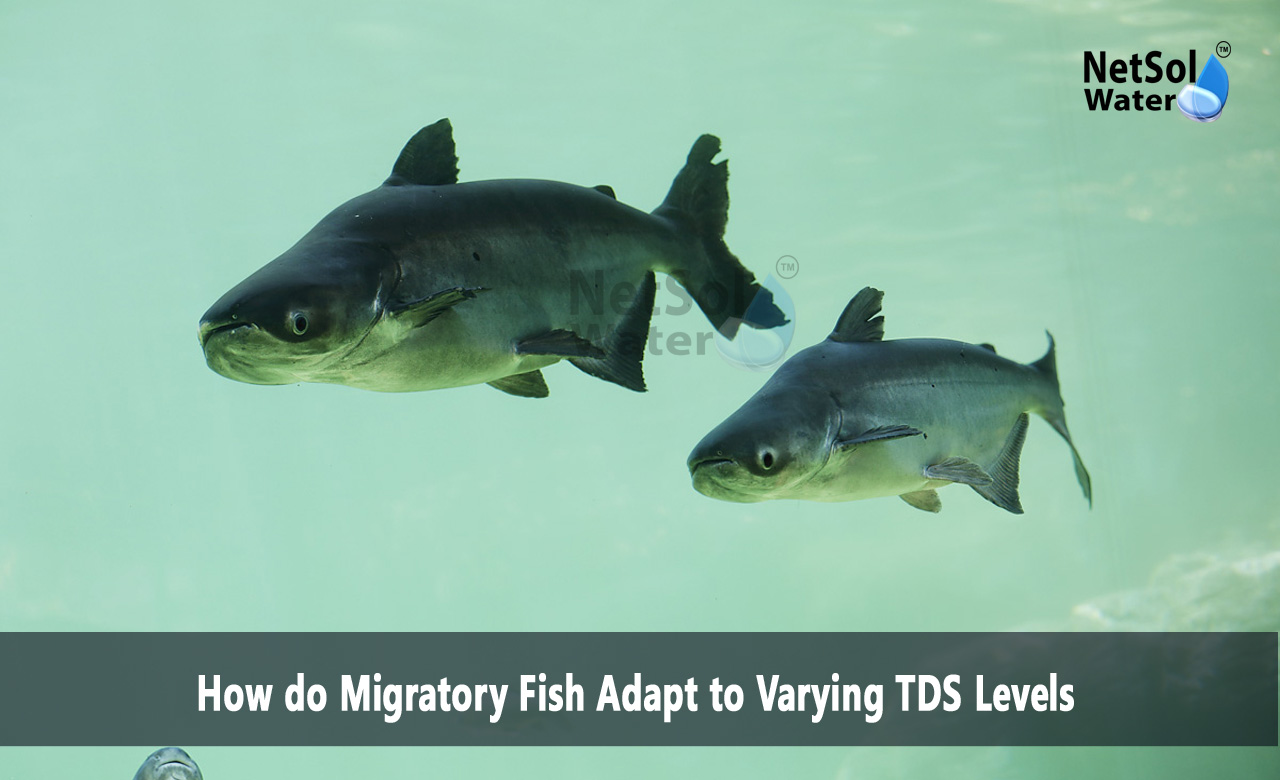How do Migratory Fish Adapt to Varying TDS Levels?
Total dissolved solids or TDS measure the mass of salts, minerals and organic matter that water carries. Migratory fish move between fresh water and brackish or marine water. That movement forces them to face large shifts in TDS and in the mix of dissolved ions. These shifts challenge the balance inside fish bodies and change feeding and breeding success. Understanding how fish adapt helps managers protect fish during routes and at spawning sites. It also guides habitat work and pollution control that keep migration safe.
What is TDS and why it matters?
TDS shows the concentration of dissolved material in water measured in parts per million. Instruments read electrical conductance and labs identify the main ions that make the total.
How TDS shapes habitat?
Higher TDS changes salinity and ion balance at the gill surface. That change alters oxygen uptake and nutrient exchange and it shifts where fish can feed and spawn.
Why managers watch TDS?
Managers use TDS as a quick screen so they know when to sample more deeply. A sudden jump in TDS sends teams to check for pollution runoff or for natural events that change water chemistry.
Common sources of TDS
Natural shifts
Tidal flow and river flow change the mix of salts and minerals near estuaries. Heavy rain floods bring river water and lower TDS locally while drought and evaporation concentrate salts.
Land based inputs
Farms and cities send fertilizers and sewage into rivers after storms. These inputs change TDS and add nutrients that shift the balance of algae and oxygen.
Coastal and industrial sources
Brine and discharge from industry or from desalination plants can raise local TDS near coastal outlets. Dredging and sediment movements release dissolved compounds in the water column.
How do migratory fish adapt to varying TDS levels?
Species level differences
Some species show strong tolerance and switch habitats with ease. Others need a narrow window of salinity when they pass from river to sea. The mix of species on a route changes how populations respond to TDS variation.
Timing and route selection
Fish pick migration times that lower their exposure to extreme TDS. Some move at night or after rain when river flow eases the transition. Timing links to food and to predator avoidance.
Life stage strategies
Young fish use sheltered estuaries that offer gradual salinity change. Adults move faster through sharp gradients to reduce the time they face strong osmotic stress.
Physiological mechanisms
Osmoregulation adjustments
Fish alter gill function and kidney activity to move salts and water. They switch ion pumps on or off to keep cells stable as external TDS moves up or down.
Hormonal control
Hormones signal tissues to change transport of sodium chloride and of water. These signals speed the switch from freshwater mode to seawater mode and back again.
Energy trade offs
Adapting to TDS costs energy and reduces energy for growth and for immune defence. Fish that travel long routes face higher cumulative cost and need good feeding to recover.
Behavioural and life cycle adaptations
Habitat use and refuge seeking
Fish use estuaries, marshes and tidal pools as buffers. These habitats soften the TDS gradient and give time for physiological change.
Feeding and activity shifts
Fish alter feeding depth and prey choice to match areas where TDS and oxygen suit their needs. Reduced activity lowers energy demand when they face strong osmotic pressure.
Reproductive timing
Some species spawn before or after peak TDS shifts to protect eggs and larvae from extreme conditions. This timing helps young survive the first sensitive stages.
Testing, monitoring and management
How to test and monitor?
Use a calibrated meter for frequent field checks at migration corridors. Pair TDS readings with nutrient metal and oxygen tests to get a clear view of water quality.
Habitat restoration and flow management
Improve riparian zones and restore wetlands to filter runoff and to smooth TDS pulses. Manage river flow where possible to protect key migration windows.
Policy and community action
Work with farmers and towns to limit runoff at sensitive times. Simple land measures reduce the dissolved load that migratory fish must face.
Conclusion
The process costs energy and it links to habitat quality and to human actions on the watershed. Good monitoring of TDS and related chemistry gives managers the warning they need to act before harm occurs. If you study migration routes or manage spawning habitat collect TDS data and pair that data with lab tests and with biological surveys. Contact us for more information or request a consultation to help protect migratory fish and to improve river and coastal health.
Contact Netsol Water at:
Phone: +91-9650608473, Email: enquiry@netsolwater.com



